Headphone Mania
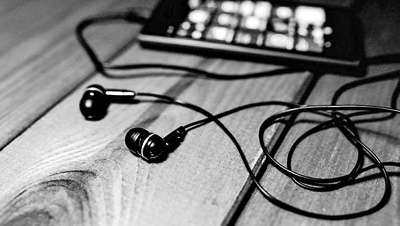
The Sennheiser CX213 is a relatively inexpensive basic pair of earphones that appeal to the casual listener (Image Credits: 10infos)
Headphones, headsets and earphones have become a staple part of our day-to-day lives. Whether it’s for listening to music or recording songs in a studio.In case you didn’t know, the difference between headsets and headphones are that the former has a microphone attached to it.
So what’s the best? Well, that depends on what type of usage you’re expecting from whatever you’re using.
The Casual Listener
Straight off the bat, these are the most common category of people who use headsets, headphones, and earphones. Depending on their preference, they may choose between headsets and headphones or the less bulky earphones.
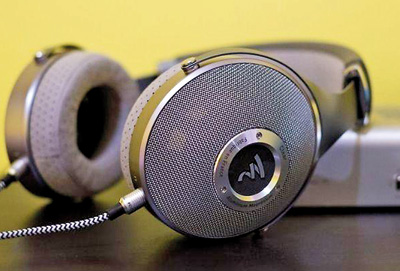
The Focal Clear is an ideal example of professional audiophile headphones (Image Credits: The Verge)
Brands such as Skullcandy, Sennheiser, Audio Technica, Marshall, and JBL all have models of headphones, headsets, and earphones to suit your needs. If you’re looking for a compact solution, earphones are the way to go.
The Audiophile
Audiophile headphones and earphones are aimed at those who crave high-fidelity music.
These headphones and earphones are powered by large audio drivers and are not coloured to a particular audio range. This means that they are not bass-heavy, nor high-range heavy, but flat.

Love bass that makes your brain rattle? Then take a look at the Skullcandy Crusher 360 (Image Credits: TechRadar)
So what you hear from these are akin to how it would be heard while in a studio.
Headphones such as the Sennheiser HD820, HD660, HD599, the Focal Clear and the Audio Technica M50X are good examples of audiophile headphones. Some headphones also come with active noise cancellation. This blocks out ambient sound giving you greater focus on the music being played.
The Bass Junkie
Somewhat of the opposite of the Audiophile, the Bass Junkie is all about that bass. They listen to a lot of bass-heavy music from genres such as Dubstep, EDM and Drum and Bass and Electronica. While good bass can really get them going, too much bass or muddy bass can overpower the details of instruments and vocals.
Headphones such as the Plantronics BackBeat Pro 2, the Sony WH-1000XM3 and the Skullcandy Hesh all provide good levels of bass to make your brain rattle around without losing too much of the rest of the instrumental detail.
Models like the Skullcandy Crusher 360 feature a patented technology that delivers a “unique sensory vibration in your headphones”. What this means is that the headphones would actually vibrate for all those bass-heavy drops and beats.
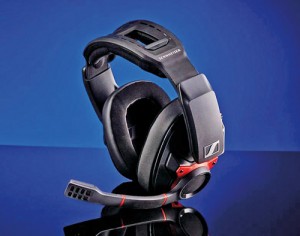
The Sennheiser GSP600 balances gaming with high fidelity music playback, but you miss out on surround sound (Image Credits: PCGamer)
In terms of earphones, usually, anything from Skullcandy is relatively bass-heavy. If you have a regular pair of earphones, you can play around with the equalizer settings of your device to increase the bass.
The Gamer
The Gamer’s choice of headphones or earphones is different. Gamers need a microphone for constant communication with teams. As such, they opt for gaming headsets or earphones with a built-in mic.
Headsets are the preferred choice here. Why? Because headsets offer a more comfortable experience when compared to earphones.

The Logitech G935 is a wireless 7.1 surround sound gaming headset. (Image Credits: The Gadget Flow)
Gaming Headsets also offer positional audio. That means if a gunshot is heard, you can accurately pinpoint where the gunshot came from. This is further enhanced by gaming headsets that are USB powered. By tweaking the software that the headset uses via PC or laptop, a gamer can get the exact drop on things.
The drawback here is that a majority of gaming headsets might forego music playback quality for positional audio. Fortunately, manufacturers such as Sennheiser offer a balance between gaming and music playback in their headsets.
In addition, brands such as Corsair, Logitech and SteelSeries offer various EQ options so that you can tune your headset to the way you would like to hear your music.
The Athlete
The athlete faces an unusual problem. Because they’re constantly moving, they need headphones or earphones that will stay firmly in place. If it’s a pair of headphones, it can’t be too bulky else it would interfere with their workout. If you’re a runner or jogger, you might not feel uncomfortable with wearing headphones and would rather opt for earphones.

Sports earphones are aimed at those who are living an active life be it gymming, jogging or even cycling. (Image Credits: Audio Technica)
Sports earphones are the way to go here. They are often IPX5 compliant which means they can handle a bit of water or sweat being on them.
Sports earphones also come with ear hooks. These attach firmly to the back of your ear to ensure that the earphone stays in place. In addition, the material itself, from the ear tips to the cable and everything in between is more sturdy than regular earphones. This helps add durability to the earphones during intense workout sessions or if you’re going for a long run or jog.
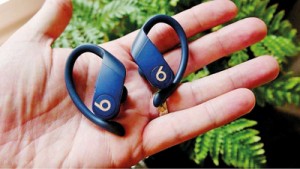
If you have the cash to splash, you can get yourself a pair of wireless sports earphones like the Powerbeats Pro (Image Credits: Pocket Lint)
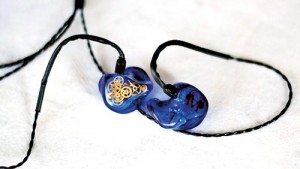
IEMs are used not only by instrumentalists but also by vocalists as well due to their small form factor and crisp audio quality (Image Credits: Philmaturano)
The Instrumentalist
Instrumentalists once again require headphones that are flat in terms of a response rate. Essentially, they too can make use of studio monitoring headphones. If you’re not a fan of bulky headphones, then you can invest in a pair of in-ear monitors or IEMs. These start off at around LKR 15,000 and can go upwards to LKR 500,000 and above.
Similar to sports earphones, IEMs generally have ear hooks that ensure the earphones are in place. Models such as the Audio Technica ATH-E70 have the cable routing around your ear rather than having a separate ear hook, along with memory foam (AKA Comply Tips). These create a snug fit once inserted into your ear and retain that shape. This means it will fit your ear perfectly each time you wear it.
As studio monitoring headphones and IEM are rather expensive, it’s recommended that you do a bit of research and find a pair that suits your requirement. You can even get help from sound engineers and home studio artists for their feedback as well.
The Studio Recorder
The Studio Recorder also needs headphones that are not colored to a particular frequency range. Because you’re recording multiple instruments and even vocals, you need to make sure that all the instruments are heard at a similar level from your headphones.
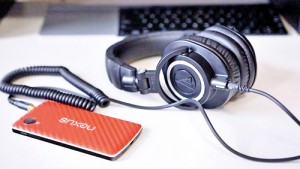
The Audio Technica M50X is a standing example of a good pair of studio monitoring headphones (Image Credits: YouTube)
This is a job for studio monitoring headphones. The Audio Technica M50X and the M70X are particularly well known for this category. Another good contender is the Sony MDRV6 Headphones. AKG too makes some really good studio monitoring headphones, among them is the AKG Pro Audio M271 MKII.
The catch here is that these headphones are not meant for outside use. In addition, as comfortable as they may be, studio headphones cannot be worn for prolonged periods without you experiencing earaches.
Headphones and earphones don’t end there
While we’ve listed down some of the more popular headsets, headphones and earphones categories, they are not all. There can be people who buy this audio equipment for a wide variety of uses. In certain cases, there might be a compromise as well.
For example, while you can use a pair of studio monitoring headphones when playing games, you won’t get the same positional audio you would get with a gaming headset. Similarly, using a bass-heavy headphone or earphone for a studio setting will not have the same result as using professional headphones.
As we said, it all depends on what you want it for, and how much you’re willing to spend. If you have a particular model in mind, do your research on it.
(The writer is a senior tech writer for readme.lk)


